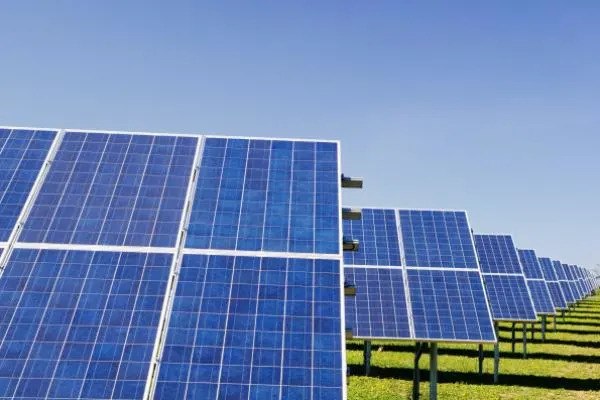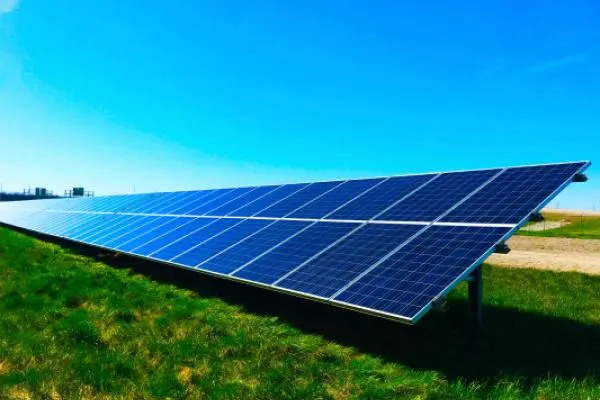Biden Administration Paying Americans Thousands of Dollars to Upgrade Their Homes

On Aug. 16, President Joe Biden signed the Inflation Reduction Act into law, directing billions of dollars to Americans looking to upgrade their homes, businesses and cars.
One provision of the law allows Americans making less than $150,000 a year to claim a $7,500 tax credit for buying an electric car.
The law also provides $9 billion in rebates to help people electrify their home appliances and make their houses more energy-efficient. It’s also allowing Americans to claim a tax credit for installing heat pumps in their homes.
Altogether, the Inflation Reduction Act is showering $369 billion on clean energy programs and businesses throughout America.
To stay updated with top startup investments, sign up for Benzinga’s Startup Investing & Equity Crowdfunding Newsletter
And clean energy investors already have something to celebrate. In the months since the act was signed into law, renewable energy companies like NextEra Energy Inc. (NYSE: NEE) have handily outperformed the S&P 500.
The law is controversial, as is any law sweeping enough to decarbonize 40% of America’s economy over the next eight years as this law purports to do. But from an investing perspective, one thing is clear: History shows that clean energy catalysts on this level can give investors the chance to multiply their money many times over.
You might remember President Barack Obama’s 2009 stimulus package, which gave billions of dollars to clean energy companies and “created Tesla as we know it,” according to Bloomberg. Tesla shares have returned almost 10,000% since — even after their recent downturn. Other clean energy companies that received loans or grants like Brookfield Renewable Partners LP have returned well over 1,000%.
Potential benefits to solar investors are especially enticing. In the years after the 2009 stimulus package, America’s solar industry grew by 2,500% — and Biden’s clean energy bill is much larger than that.
In 2023, the White House plans to assist 7.5 million Americans in putting solar panels on their rooftops — and that could be a major opening for YouSolar, a startup that helps its customers transition to the electric grid painlessly and seamlessly.
As Bloomberg has pointed out, the global cost to decarbonize power grids could amount to more than $28 trillion. That’s a big deal for one company that could bring countless consumers toward an all-electric life.
© 2023 Benzinga.com
William Dahl
Wed, January 25, 2023

You probably haven’t heard of Coke County, Texas. Out of thousands of counties in America, it’s one of the smallest, with just 3,300 residents.
But it enjoyed the biggest economic boom of any county from 2019 to 2021, according to an analysis from the Bureau of Economic Analysis. In those two years, Coke County’s gross domestic product (GDP) rose by 83%, from $128 million to $235 million.
The growth is being credited to a surge in wind farm construction. New wind farms are paying landowners in Coke County annual royalties of up to $10,000 while creating jobs and lowering energy costs. These twin economic benefits have helped the county’s GDP per capita rise from $39,000 a year to $71,000. The explosion in wealth has led one county judge to describe the locals as “tickled pink about this.”
But it’s not just Coke County. Of the 10 American counties with the biggest spikes in GDP from 2019 to 2021, seven have seen major wind farm construction in that time frame.
For now, Coke County must decide how to spend the annual payments of $787,000 it’s receiving from the Aviator Wind Farm over the next decade. An official says the money will be spent on roads, bridges, senior centers and other projects benefiting the public.
What’s striking is that this boom, which is already transforming dozens of U.S. counties economically, started well before President Joe Biden signed the $369 billion clean energy stimulus package into law last August. The law is lavishing tens of billions of dollars on wind and solar energy projects through tax credits or direct spending.
In particular, the law extends a tax credit for solar power production facilities, providing they begin construction before January 2025. This will encourage a wave of new solar power manufacturing facilities throughout America — especially when paired with the $8 billion the federal government is spending to help households install solar panels.
Between these tax credits, $8 billion in direct spending and Biden’s order to decarbonize hundreds of thousands of buildings owned by the federal government, it’s clear that millions of buildings in America will be installing solar panels in the next few years.
One way to play this trend is through the startup YouSolar, which is pioneering an advanced solar nano-grid to allow customers to go solar with minimal inconvenience or disruption. The company’s fully-integrated power grid will allow households to retain power even amid blackouts of the conventional power grid.
For now, YouSolar mainly serves high-income households in Northern California. But that could quickly change as massive incentives for solar power generation transform households, businesses and government agencies throughout America.
This article originally appeared on Benzinga.com
No comments:
Post a Comment